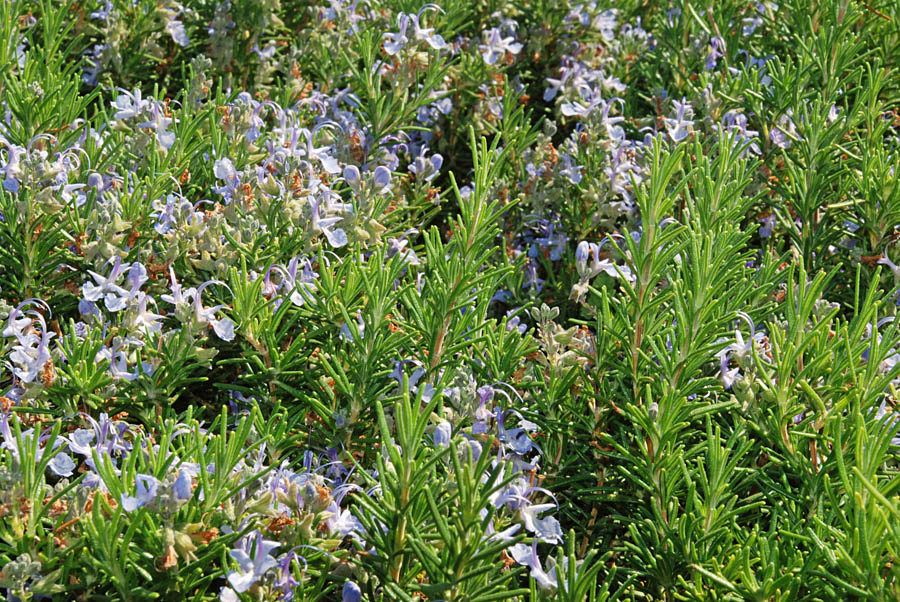GardenZeus Quick Tips: Rosemary in the Sustainable Garden

As a Mediterranean native, rosemary is an ideal choice for a sustainable garden in much of California. Rosemary can thrive in harsh microclimates in a given garden that are too infertile or dry for other plants. When given full sun and just enough water, rosemary graces the garden as attractive plant with its silver leaves and characteristic aroma.
Rosemary requires well-draining soil. It grows best in neutral to alkaline soil with average fertility. Once established, it requires no additional fertility.
Nature designed rosemary as an extremely drought tolerant plant. Its thick needle-like leaves retain water and transpire at lower rates than other succulent herbs. The silver underside of its leaves reflect light and work to keep the plants cool. Once established, water rosemary deeply but infrequently, once or twice a week. Allow the soil to dry between waterings. Excessive watering can result in weak or woody growth. Do not overwater or allow the soil to remain waterlogged.
Try planting rosemary in difficult locations within your garden, such as in marginal areas or along the edges of your space where other plants may not thrive.
Use low-growing or creeping varieties of rosemary to shade and protect your soil and to prevent wind and water erosion. Use upright varieties of rosemary to prune into edible hedges. The more creatively inclined can prune upright varieties into edible topiaries.
Once you have removed the fragrant rosemary leaves from their stems for use in cooking, try saving the stripped rosemary branches: they make sustainable skewers for grilling meat, fish or vegetables and add their flavor to your dish.
Don’t know your GardenZeus climate zone? Click here.
Thyme as an Element in a Sustainable Garden
Chlorine, Soil, and Watering Gardens (Chlorinated Water, Part 1 of 2)
Remove Chlorine When Watering Organic Gardens (Chlorinated Water, Part 2 of 2)